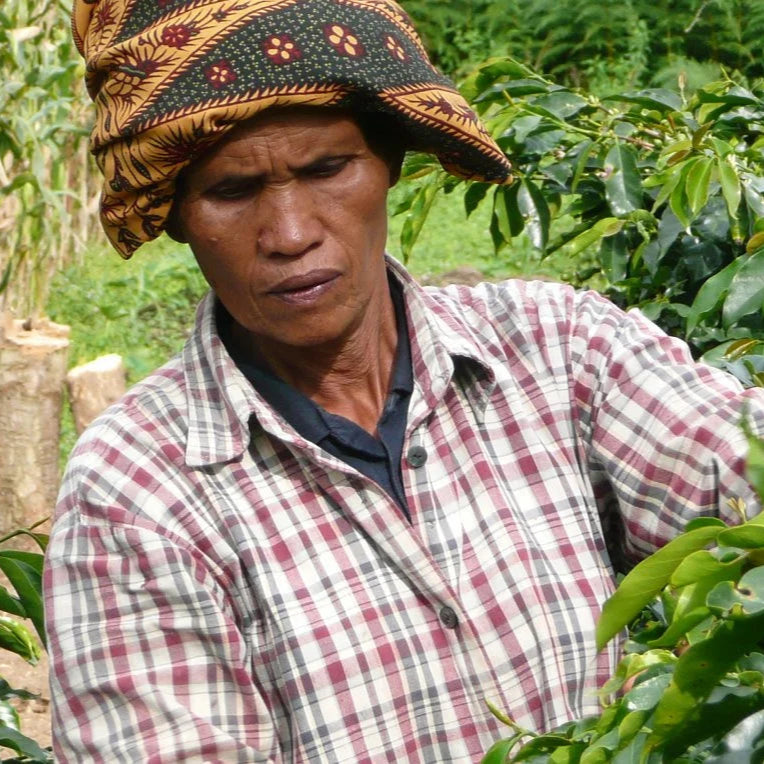
This coffee’s roasted in our espresso style — but that doesn’t mean you need to brew it as espresso. You can make it however you like — espresso, filter, moka pot, AeroPress or whatever you enjoy. We roast it a touch darker than we would a filter roast to caramelise the sugars and bring out smooth chocolatey and nutty flavours that cut beautifully through milk.
When you add milk the natural sweetness, fat and proteins tend to soften acidity and highlight caramelised flavours. That’s why lighter filter roasts can sometimes taste a bit sharp or sour with milk — they’re simply not built for it. Espresso roasts being more developed balance this out. The deeper caramelisation creates toffee and cocoa notes that blend harmoniously with milk’s creaminess while a hint of gentle bitterness adds that satisfying ‘coffee punch’ in your flat white or cappuccino.
If you prefer your coffee black this roast will still give you a full-bodied rich cup with plenty of depth and sweetness. For a lighter fruitier experience you might enjoy exploring our filter range instead.
Origin and Sourcing
?
?
?
Roast Details
?
?
?
?
?
?
?
?
Taste Profile
?
?
Indonesia | Mandheling | Typica/Bourbon/Caturra/Catimor Wet Hulled Grade 1 - When is peak freshness?
Light Roast - Roasted on Roest P3000
Other Information
Type: Arabica
Screen Size: Not specified
Country Grading: Grade 1
-
About Typica, Bourbon, Caturra, Catimor
Typica was one of the first Arabica varieties introduced to Indonesia by the Dutch in the 17th century, originally brought from Yemen. It formed the genetic backbone of early coffee cultivation in Java and other parts of the archipelago. While much of the original Typica was lost to coffee leaf rust in the 19th century, remnants of its genetics still survive in older trees and traditional farms, especially in remote or high-altitude regions. In Indonesia, Typica typically produces a mild and smooth cup, with low to medium acidity, herbal and earthy undertones, and sometimes a subtle sweetness—flavors that align with the classic "Indonesian profile" favored by many traditional roasters.
Bourbon was introduced later and in more limited areas than Typica, often as part of breeding programs or via local farmer exchanges. In Indonesia, it is less widespread but can be found in higher elevations of Sumatra, Java, and Sulawesi, where it benefits from cooler temperatures and rich volcanic soils. Bourbon grown in Indonesia tends to produce a fuller-bodied cup with enhanced sweetness, low acidity, and notes of dark chocolate, spice, and dried fruit. It is appreciated for its cup quality but not widely planted due to its lower yield and disease susceptibility compared to hybrids like Catimor.
Caturra is a natural dwarf mutation of Bourbon that originated in Brazil and was later introduced to parts of Indonesia for its compact size and higher yield potential. In Indonesia, Caturra has been planted in regions like Flores and parts of Java, often alongside Bourbon and Catimor. While its disease resistance isn’t as strong as other hybrids, its shorter stature makes it easier to harvest and manage on smallholder farms. Indonesian-grown Caturra often produces a clean, sweet cup with medium acidity and notes of caramel, mild fruit, and chocolate—though the quality can vary depending on altitude and processing.
Catimor is one of the most widely planted coffee varieties in Indonesia today, especially in regions like Aceh, North Sumatra, and Bali. A hybrid between Caturra and the disease-resistant Timor variety (which contains Robusta genetics), Catimor was introduced in the 1970s–80s through government programs aimed at increasing yields and combating leaf rust. Its robustness and productivity made it appealing to farmers, though its cup quality has historically been seen as inferior to Typica or Bourbon. That said, when grown at high elevations and processed carefully, Indonesian Catimor can surprise with solid body, clean profiles, and notes of spice, cocoa, and light fruit—making it a practical and economically viable choice for many producers.
Coffee in Indonesia
Indonesia is one of the world’s largest coffee producers and has a rich history of cultivation dating back to the late 1600s, when the Dutch East India Company introduced Arabica coffee to Java. Today, coffee is grown across several major islands, including Sumatra, Java, Sulawesi, Bali, and Flores, with each region offering unique terroirs and post-harvest traditions. Most of Indonesia’s Arabica coffee is grown at altitudes between 1,000–1,800 meters by smallholder farmers working on plots of land less than a hectare in size. These farmers often use traditional, low-input methods, and the fragmented nature of production means coffees are usually collected and processed through cooperatives or local mills.
What sets Indonesian coffee apart is its diverse range of processing methods and distinctive flavor profiles. In regions like Sumatra, the traditional wet-hulled method (locally known as giling basah) imparts a signature earthy, herbal, and full-bodied character with low acidity. Meanwhile, other regions like Bali or Flores may use fully washed or natural processing, leading to brighter, fruitier, and more vibrant cup profiles. Indonesia’s coffee industry faces challenges such as aging tree stock, climate pressures, and infrastructure limitations, but it also holds immense potential for growth in the specialty sector, where producers are increasingly experimenting with microlots, improved processing, and sustainable practices.
SKU: ind_mangeling_1000g
Package Weight: 1050g
How does my coffee come packaged?
- Choosing a selection results in a full page refresh.
- Opens in a new window.

